So the https://www.amazon.com/gp/product/B00JQV6NNC/ arrived on a Sunday. At the rated 12V directly on the ends, they got too hot to touch & weren't as bright as hoped. 1 of the modules was dead from marginal soldering. They only burned 7A, giving each strip only 42W of its rated 72W. Daisychaining with voltage applied to both ends didn't work as hoped. There are still LEDs farthest from the ends. If they had the same voltage as the end LEDs, that would be a free lunch. Instead, they're 1.5V lower & much cooler than the ends. The internet definitely understated the amount of voltage drop in these strips.
Of course, getting 12V to the ends required 15V on the Mastech if both electrodes go to each end. If only a single electrode is connected to each end, the Mastech needs 20V.
They need to be adhered to something to draw away the heat or derated. If the Mastech outputs 12, they see 10V & the current is only 3.5A.
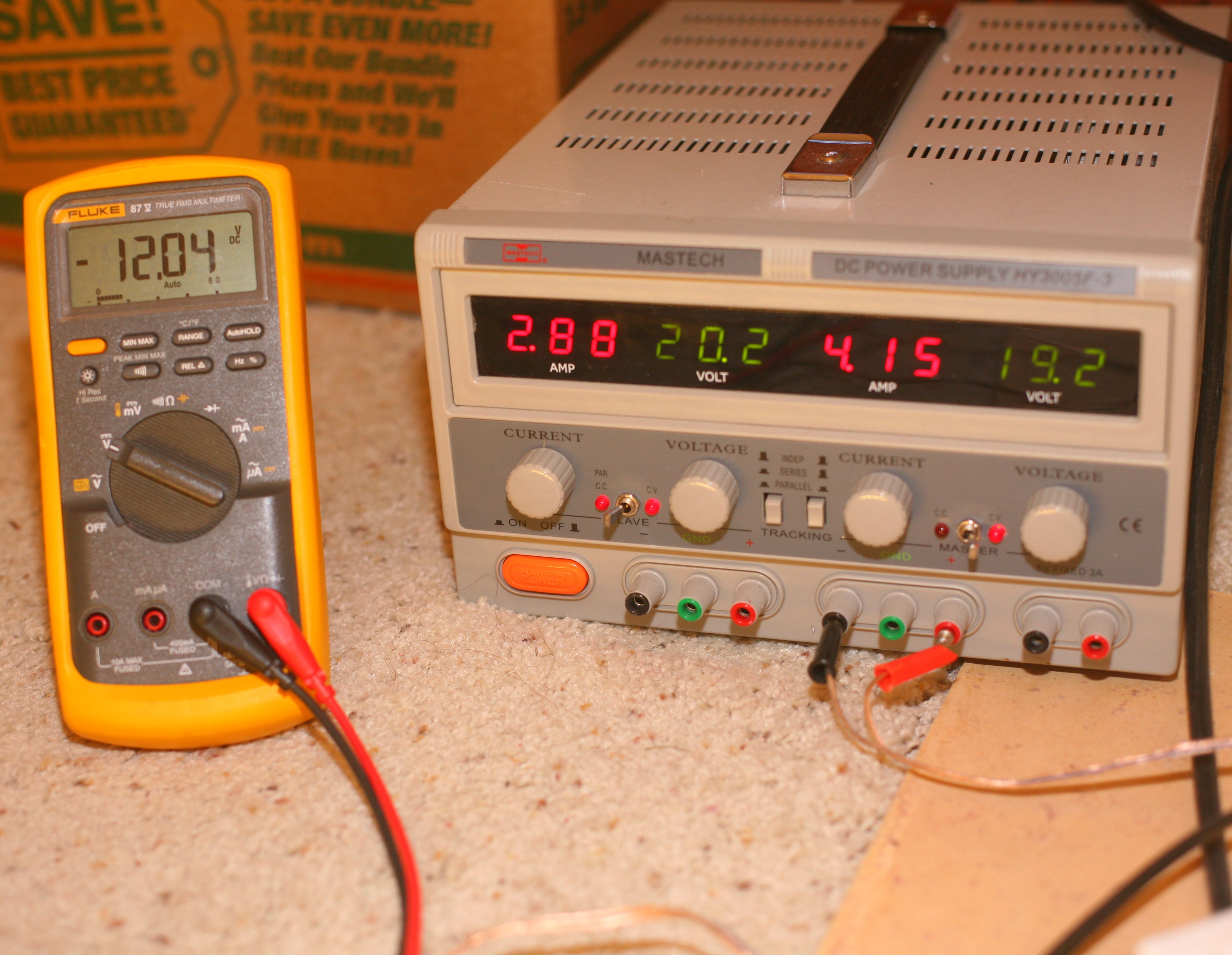
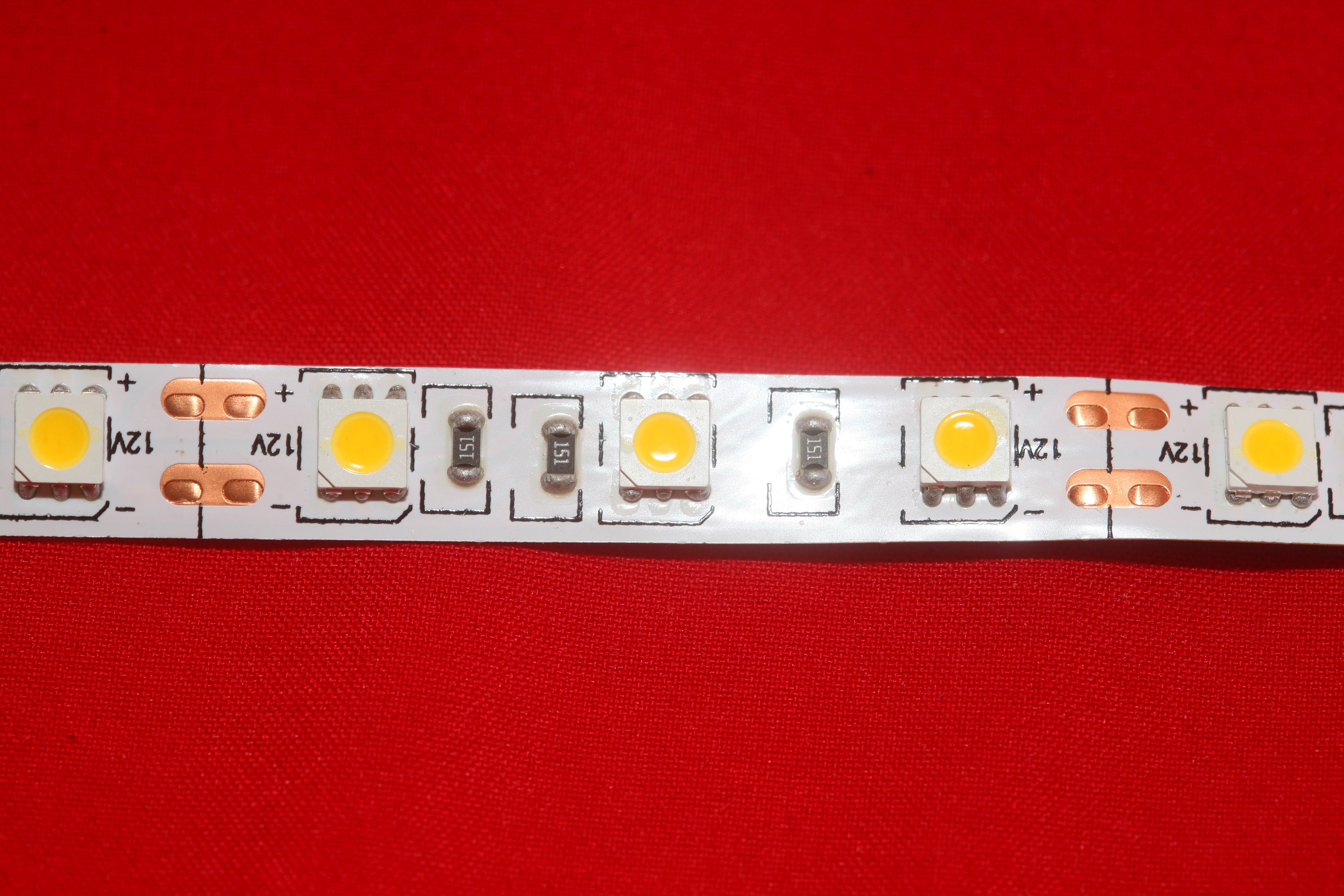
There are no diodes. There's a 150R limiting current to each LED. They bleed off a huge amount of power, just so it can use a standard 12V.
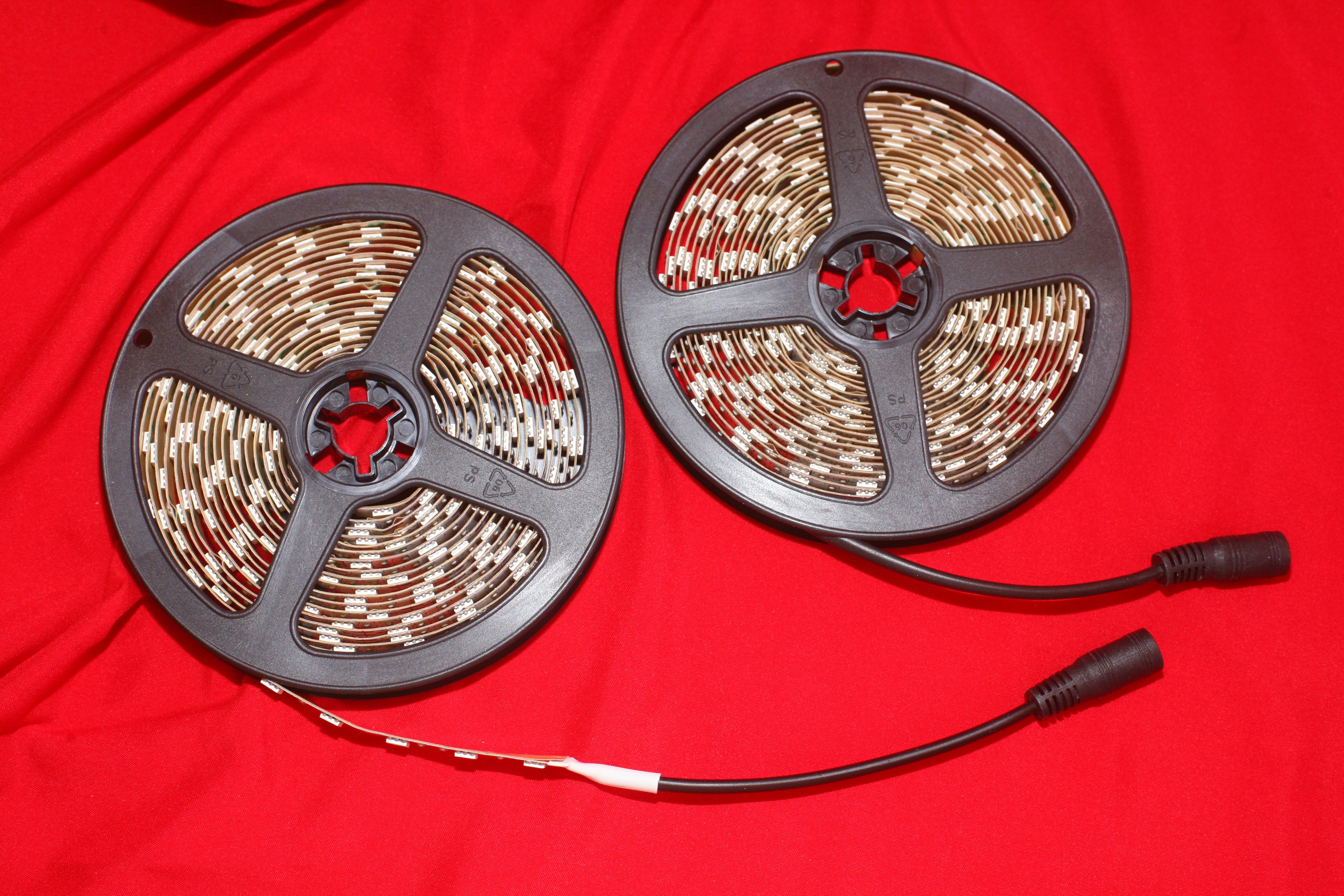
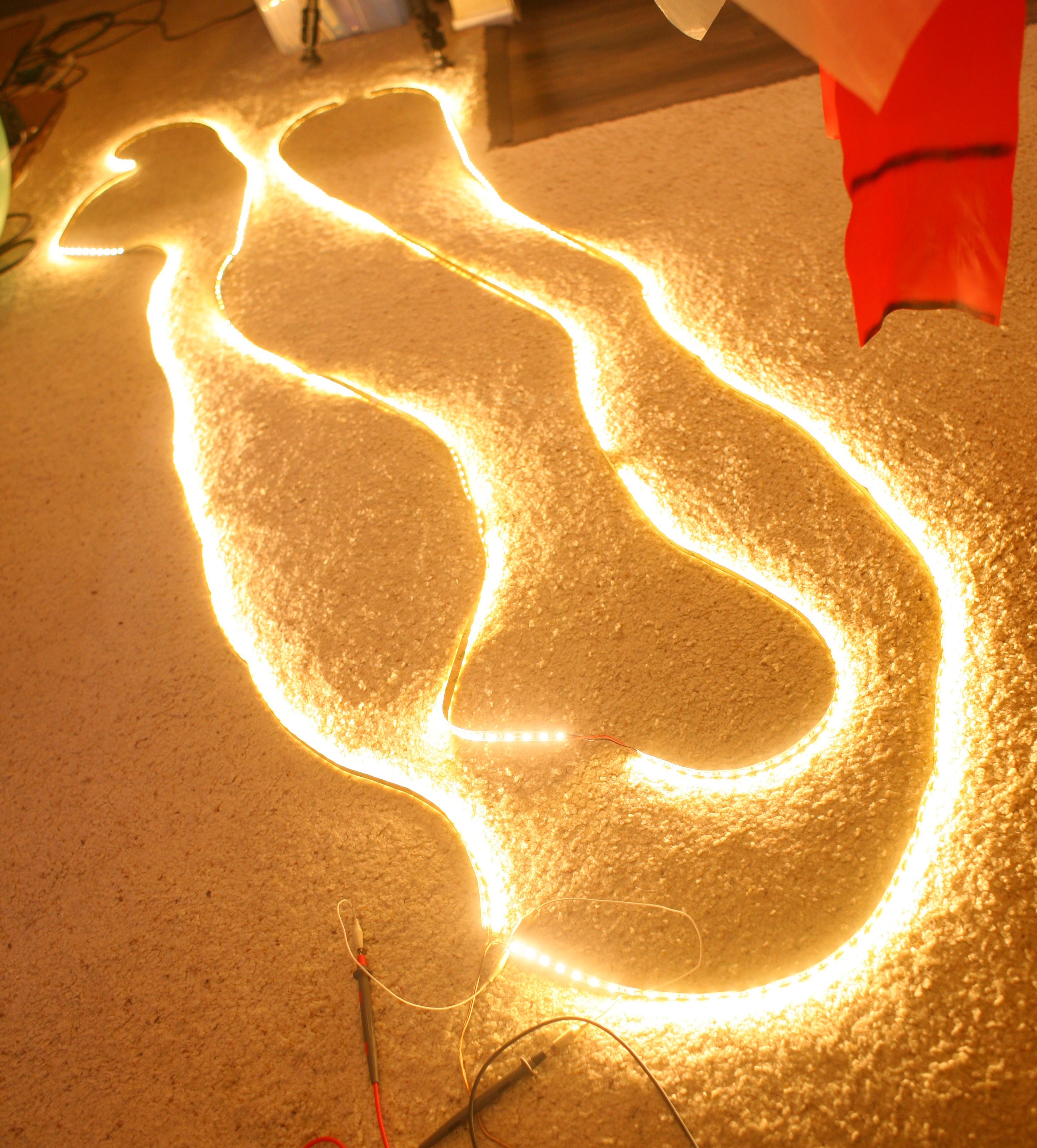
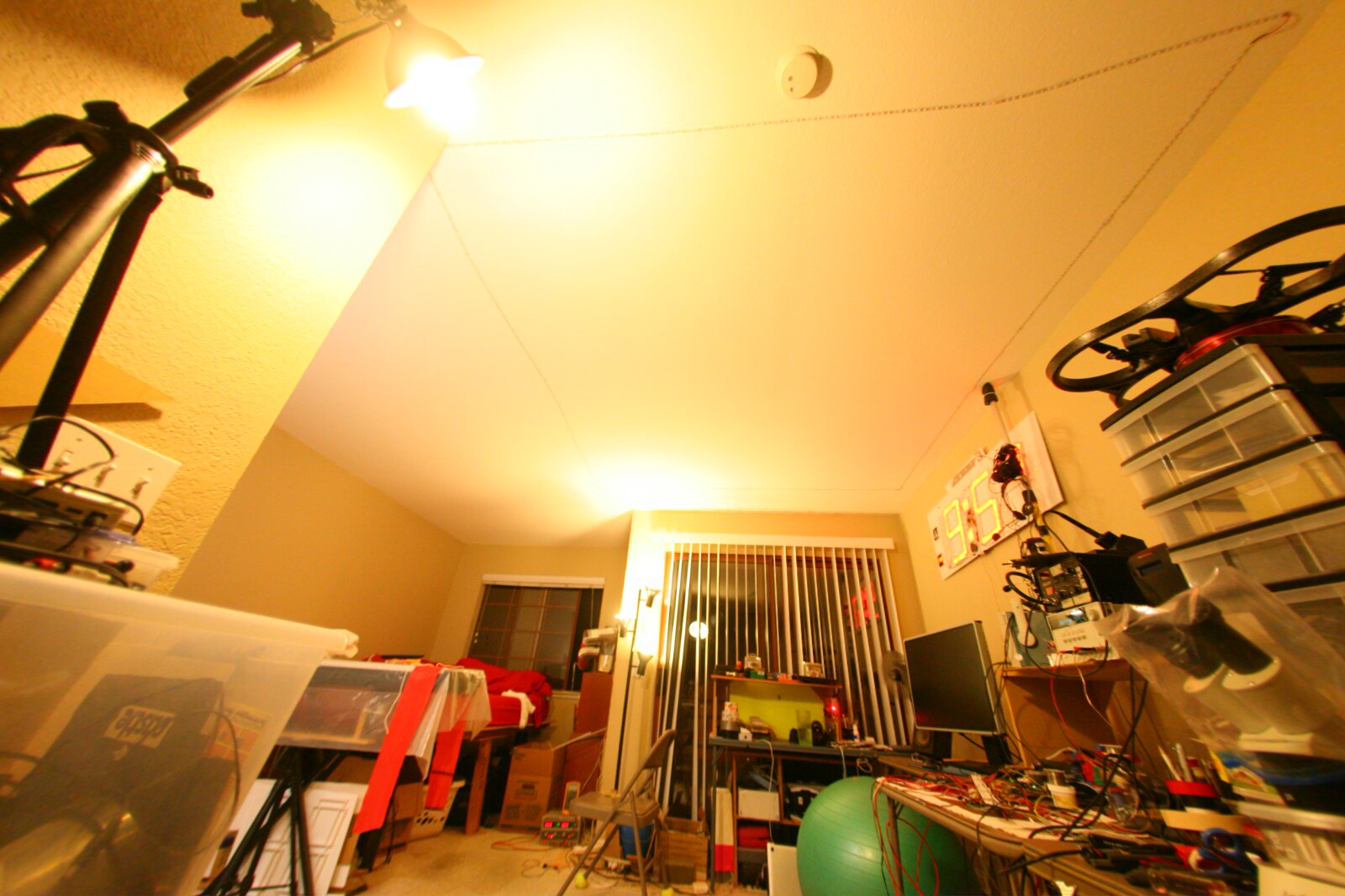
Conventional lights
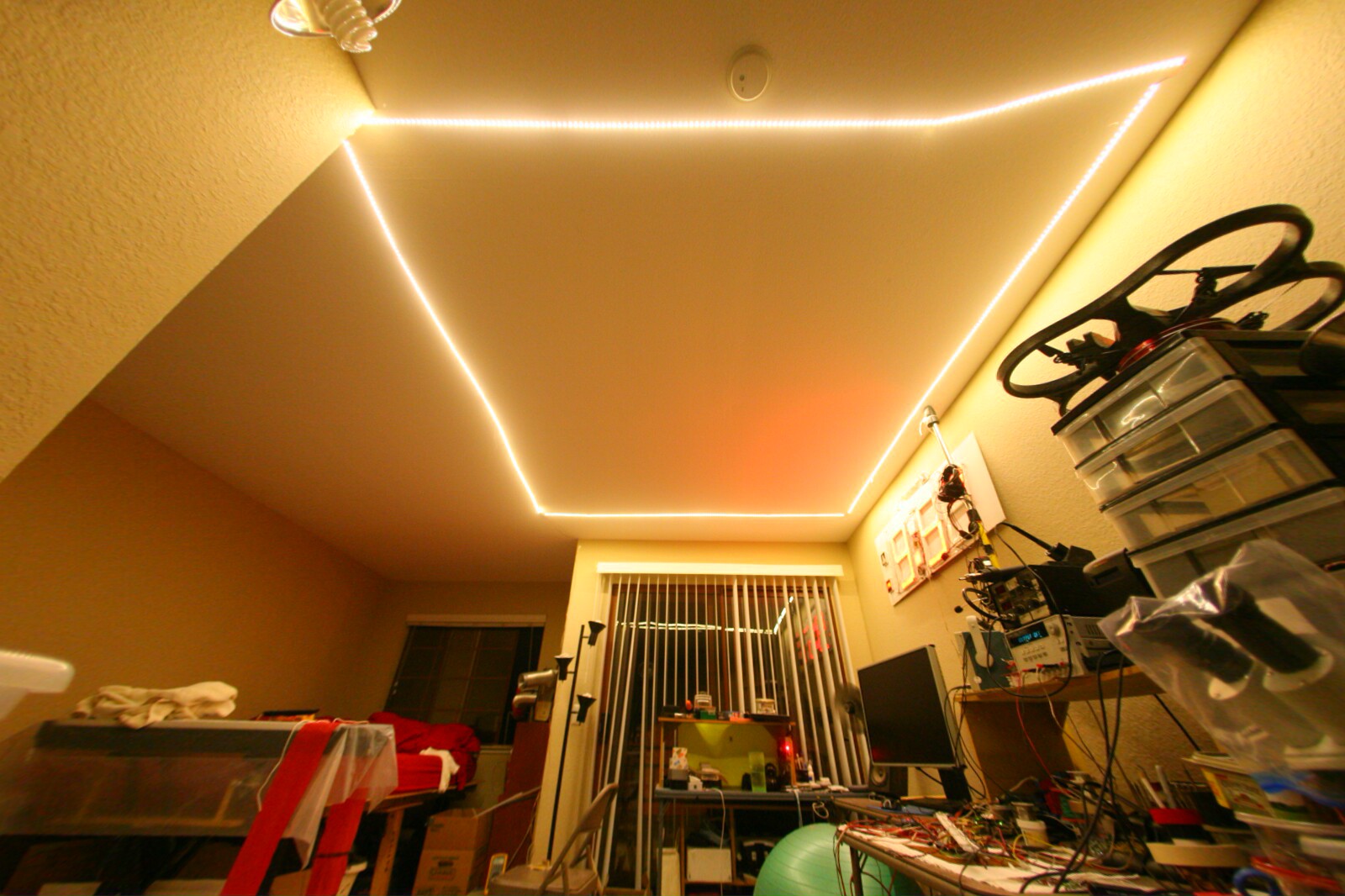
Decided to partially adhere them directly to drywall. At 3.5A, they were quite dim compared to the CFL's.
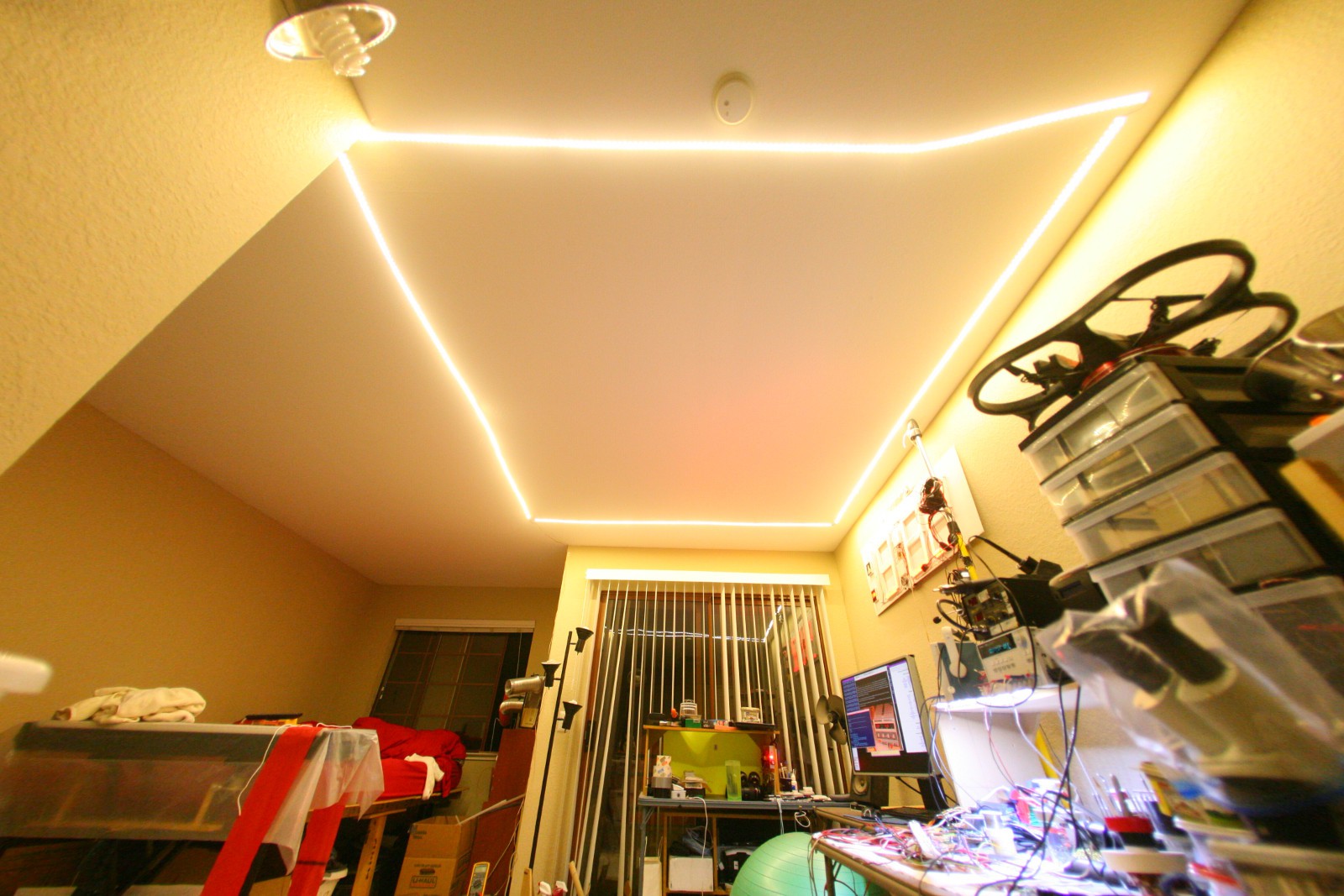
7A with no other lights were significantly brighter but still no replacement for the CFLs. Since they're not completely adhered to drywall, they're not dissipating the full heat load. The Mastech also burns off a huge amount of energy to make 7A. It doesn't look anywhere near as bright as 84W of LEDs should look, but that's why it was only $20. It's definitely not the daylight claimed by the internet.
 lion mclionhead
lion mclionhead
Discussions
Become a Hackaday.io Member
Create an account to leave a comment. Already have an account? Log In.